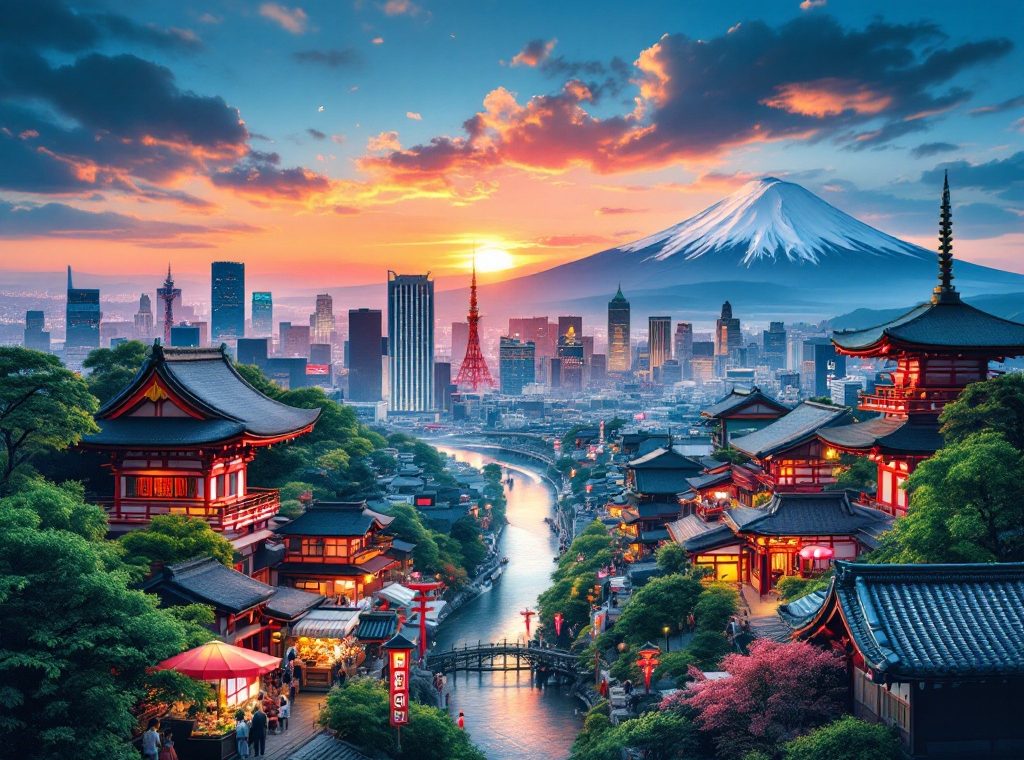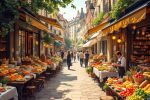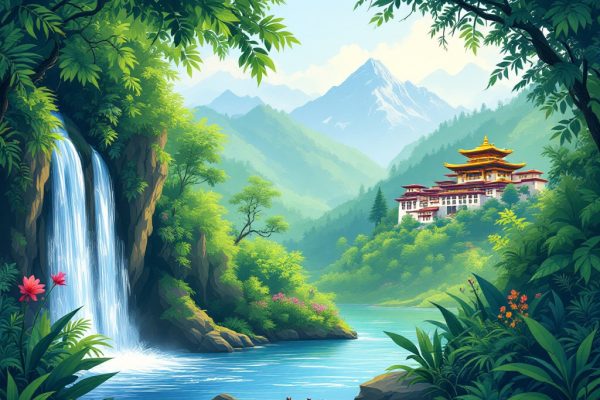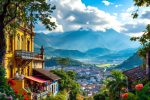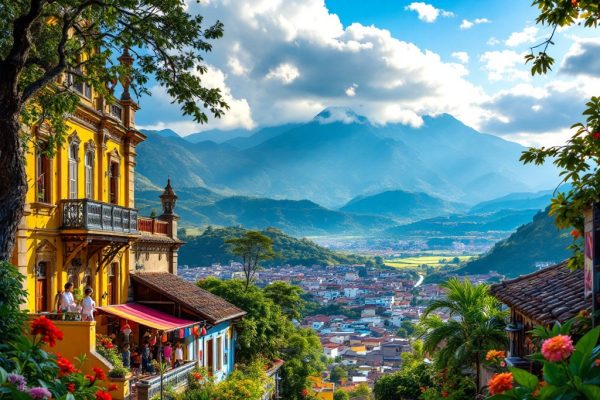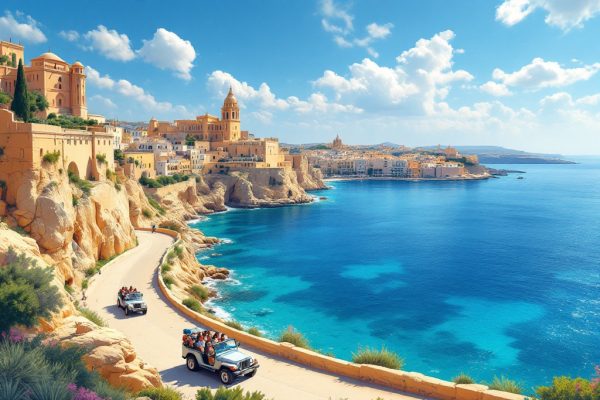Exploring Tradition and Modernity: The Best Cities in Japan to Visit
Journey through time in Japan, where ancient temples meet modern marvels. Explore vibrant Tokyo, serene Kyoto, delicious Osaka, and resilient Hiroshima. Discover iconic landmarks, from towering skyscrapers to tranquil gardens. Experience the Shinkansen’s speed, savor unique cuisine, and immerse yourself in rich culture. Uncover the magic of Japan – start your adventure now!
Important information

- Japan offers a blend of modern and traditional: From Tokyo’s skyscrapers to Kyoto’s ancient temples, the country showcases a captivating mix of old and new.
- Kyoto is a cultural hub: With over 1,500 Buddhist temples and 400 Shinto shrines, Kyoto offers a rich spiritual and historical experience, including iconic sites like Kinkaku-ji (Golden Pavilion) and Fushimi Inari Shrine.
- Foodie experiences abound: Osaka is known for okonomiyaki, a savory pancake, and its vibrant street food scene. Fukuoka is famous for Hakata ramen, a rich pork bone broth ramen.
- Festivals showcase cultural heritage: Events like Kyoto’s Jidai Matsuri (historical procession) and Sapporo’s Snow Festival (ice sculptures) offer unique cultural experiences.
- Efficient travel: Japan’s Shinkansen bullet train network provides fast and convenient transportation between major cities, making it easy to explore different regions.
Exploring Tradition and Modernity in Japan
Japan masterfully blends ancient traditions with modern marvels. Towering skyscrapers stand alongside centuries-old temples, creating a captivating cultural tapestry.
Kyoto
Kyoto, with its serene tea houses and historic temples, embodies the spirit of old Japan.
Tokyo
Tokyo pulsates with cutting-edge technology and futuristic architecture.
Osaka
Osaka offers a vibrant urban experience, yet its historical landmarks, such as Osaka Castle, connect the city to its rich past.
Hiroshima
Hiroshima’s poignant Peace Memorial Park serves as a solemn reminder of its history, while the city’s remarkable reconstruction showcases its enduring resilience.
A journey through Japan is a journey through time, a captivating exploration of tradition and innovation.
The Best Cities in Japan to Visit
From Tokyo’s vibrant metropolis to Kyoto’s tranquil temples and gardens, Japan offers a diverse tapestry of experiences. Osaka’s street food scene tantalizes the senses. Hiroshima’s Peace Memorial Park provides a space for reflection.
Fukuoka blends urban excitement with coastal charm. Sapporo’s winter landscapes sparkle with snow. Kanazawa retains the elegance of Edo-era architecture. Miyajima’s floating torii gate is an instantly recognizable landmark.
Each city offers a unique and unforgettable window into Japanese culture and history.
Tokyo: A Feast for the Senses
Tokyo, a dazzling metropolis, showcases Japan’s modern marvels. Towering skyscrapers pierce the sky, while cutting-edge technology permeates every corner of this vibrant city. At its heart lies Shibuya Crossing, a bustling intersection embodying Tokyo’s energetic pulse and renowned as one of the world’s busiest. Fashion-forward districts like Shinjuku and Harajuku offer trendy shopping experiences, showcasing the latest styles. Tokyo’s innovative spirit shines brightly at teamLab Borderless, a digital art museum pushing the boundaries of creativity. Robots and automation are commonplace, further highlighting the city’s futuristic landscape. Yet, amidst this modernity, Tokyo reveres its rich traditions, creating a captivating blend of old and new that sets it apart.
Kyoto: The Cultural Capital of Japan
Kyoto, the cultural heart of Japan, boasts over 1,500 Buddhist temples and 400 Shinto shrines. This historic city has served as a hub of cultural development for millennia.
Osaka: Culinary Delights Await
Osaka, Japan’s culinary heart, is a foodie’s dream. Famous for its savory okonomiyaki pancake, the city is a must-visit for any gourmand. But Osaka offers far more than just this iconic dish. Explore Dotonbori’s vibrant street food scene and sample delicacies like takoyaki (delicious octopus balls) and crispy kushikatsu skewers. This dynamic city also boasts a unique blend of traditional Japanese and international cuisines, ensuring a delightful experience for every palate.
Hiroshima: City of Peace and Reflection
Hiroshima, known as the “City of Peace and Reflection,” poignantly memorializes its history in the Peace Memorial Park. This park commemorates the atomic bombing and advocates for a nuclear-free future. Within the park stands the Atomic Bomb Dome, a skeletal reminder of the devastation and a symbol of hope.
Fukuoka: Urban, Coastal, and Ancient Highlights
Fukuoka offers a captivating blend of modern urban excitement and traditional charm. Explore the bustling city center and serene coastal landscapes. Discover ancient temples and vibrant shopping districts. Unwind on Fukuoka’s beautiful beaches and savor the city’s renowned Hakata ramen—a true culinary delight. Experience the best of both worlds in this dynamic and enchanting Japanese city.
Sapporo: Winter Wonderland and More
Sapporo, host of the 1972 Winter Olympics, is renowned for its spectacular Sapporo Snow Festival. Every February, visitors can marvel at incredible snow and ice sculptures, making it a truly unmissable winter event.
Kanazawa: A Glimpse into Edo Period Architecture
Travel back to Japan’s Edo period in Kanazawa. Explore the city’s beautifully preserved districts, showcasing historical architecture and traditional building techniques, and discover unique design styles.
Miyajima: Iconic Torii Gate and Shrines
Miyajima Island is renowned for the iconic Itsukushima Shrine, particularly its “floating” torii gate, an illusion created at high tide. The shrine complex itself extends beyond this striking landmark, encompassing a prayer hall and a Noh theatre stage.
Experiencing Japan’s Cultural Heritage
Explore Japan’s rich cultural heritage through its numerous Buddhist temples and Shinto shrines. These sacred sites offer a glimpse into the nation’s spiritual history and unique architectural traditions. Kyoto, often hailed as Japan’s cultural capital, is an ideal starting point.
Kyoto’s Cultural Gems
Kyoto boasts many UNESCO World Heritage sites, including the famous Kinkaku-ji (Golden Pavilion) and Kiyomizu-dera, known for its wooden stage and stunning panoramic views. Experience a traditional tea ceremony or explore Gion, a renowned geisha district.
Temples and Shrines
Kyoto’s identity is interwoven with its tranquil temples and shrines. Heian Jingu Shrine, dedicated to the Heian period, features vibrant vermillion buildings and expansive gardens. Fushimi Inari Shrine is equally captivating, with thousands of bright orange torii gates ascending Mount Inari.
Kinkaku-ji (Golden Pavilion)
Admire Kinkaku-ji’s golden reflection shimmering on the pond.
Kiyomizu-dera Temple
Take in the breathtaking city views from Kiyomizu-dera’s wooden stage.
Heian Jingu Shrine
Explore the vibrant vermillion buildings and spacious gardens of Heian Jingu Shrine, a tribute to the Heian period.
Fushimi Inari Shrine
Walk through the thousands of brilliant orange torii gates winding up Mount Inari at Fushimi Inari Shrine.
Each site offers a unique perspective on Japanese culture, showcasing its religious architecture and diverse cultural practices.
Buddhist Temples and Shinto Shrines in Kyoto
Kyoto, Japan’s cultural center, is home to over 1,500 Buddhist temples and 400 Shinto shrines, testaments to the country’s rich spiritual heritage. Experience the beauty of Kiyomizu-dera Temple or the wonder of Fushimi Inari Shrine for a glimpse into Japan’s vibrant past.
Heian Jingu Shrine: A Kyoto Landmark
Kyoto’s Heian Jingu Shrine is a prominent landmark, honoring two significant emperors. These are Emperor Kanmu, the city’s founder, and Emperor Komei, the last imperial resident of Kyoto. The shrine reflects the city’s rich history as Japan’s ancient capital.
Fushimi Inari Shrine: The Mystical Fox Statues
Fushimi Inari Shrine, renowned for its thousands of vibrant red torii gates, presents a breathtaking spectacle. These gates wind their way up the mountain, honoring Inari, the Shinto deity of rice, sake, and prosperity. As foxes, known as kitsune, serve as Inari’s messengers, their statues are ubiquitous throughout the shrine grounds. These statues often clutch symbolic items like keys, jewels, or scrolls.
Kinkaku-ji: The Golden Pavilion
Kinkaku-ji, Kyoto’s Golden Pavilion, is a UNESCO World Heritage site renowned for its breathtaking gold leaf exterior. This sacred temple attracts visitors from across the globe, providing a uniquely enriching cultural experience.
Kiyomizu-dera Temple: Panoramic Views of Kyoto
Kiyomizu-dera Temple offers breathtaking views of Kyoto, drawing visitors from all over the world. The temple also features the Otowa Waterfall, believed to grant good fortune to those who drink its waters.
Modern Attractions and Activities
Tokyo’s themed cafes offer a truly unique experience, from robotic servers to cuddly cats, and even owls and maids.
Electronics and anime enthusiasts must visit Akihabara to see life-sized Gundam robots and explore interactive exhibits.
For traveling between major cities, the Shinkansen bullet train network provides remarkably fast and efficient transit across Japan.
Themed Cafes and Giant Robots in Tokyo
Tokyo offers a diverse range of themed cafes, from cat cafes for feline lovers to anime-themed cafes for enthusiasts. For a unique experience, visit the Gundam Factory Yokohama, home to a life-sized, moving Gundam robot. Another must-see is Akihabara, famous for electronics, gaming, and robot restaurants with elaborate shows. Tokyo blends technology and pop culture seamlessly.
Bullet Train: Speed and Efficiency Across Japan
Japan’s Shinkansen, or bullet train, offers incredibly fast travel, efficiently connecting major cities like Tokyo, Kyoto, and Osaka. This extensive network simplifies exploring the country, allowing quick trips between diverse regions. The Shinkansen is truly a marvel of engineering and speed.
Japanese Food Culture and Festivals
Japanese festivals offer a delightful exploration of the country’s diverse culinary traditions. Many festivals highlight regional specialties, like Osaka’s okonomiyaki and Fukuoka’s Hakata ramen. These flavorful traditions are often intertwined with elaborate feasts during events such as Kyoto’s Jidai Matsuri and Sapporo’s Snow Festival, showcasing Japan’s rich cultural heritage.
Osaka’s Okonomiyaki
Okonomiyaki, a savory pancake, is considered Osaka’s soul food. A must-try for visitors, it’s readily available at street stalls and restaurants, offering a true taste of the city’s vibrant culinary scene.
Fukuoka’s Hakata Ramen
Fukuoka, particularly the Hakata district, is renowned for its rich tonkotsu (pork bone) ramen. The city’s coastal location and regional influences contribute to a diverse cuisine beyond its signature dish.
Kyoto’s Jidai Matsuri
Kyoto’s Jidai Matsuri is a historical procession showcasing different eras of Japanese history. Traditional food offerings complement the celebration, adding another layer to the city’s historical legacy.
Sapporo’s Snow Festival
The Sapporo Snow Festival is a winter wonderland of stunning snow and ice sculptures. Visitors can also indulge in a variety of winter delicacies.
Tasting Okonomiyaki in Osaka
Osaka is famous for okonomiyaki, a savory pancake. It’s made with flour, yam, and cabbage, often with additions like pork or shrimp. Cooked on a griddle, it’s topped with okonomiyaki sauce, mayonnaise, and seaweed flakes. This popular dish is easy to find throughout the city, especially in Dotonbori.
Hakata Ramen and Culinary Delights in Fukuoka
Hakata ramen, with its rich and creamy tonkotsu (pork bone) broth, is a culinary symbol of Fukuoka. Fukuoka’s coastal location also offers a bounty of fresh seafood, contributing to a diverse food scene that caters to every palate.
Jidai Matsuri: Celebrating Kyoto’s Legacy
Kyoto’s Jidai Matsuri, held annually on October 22nd, is a grand celebration honoring the city’s founding and showcasing its rich history and cultural heritage.
Sapporo Snow Festival: A Winter Spectacle
The Sapporo Snow Festival is a hugely popular winter event held annually in Japan, renowned for its breathtaking snow and ice sculptures. This spectacular festival draws visitors from around the globe who come to admire the impressive artistry on display.

